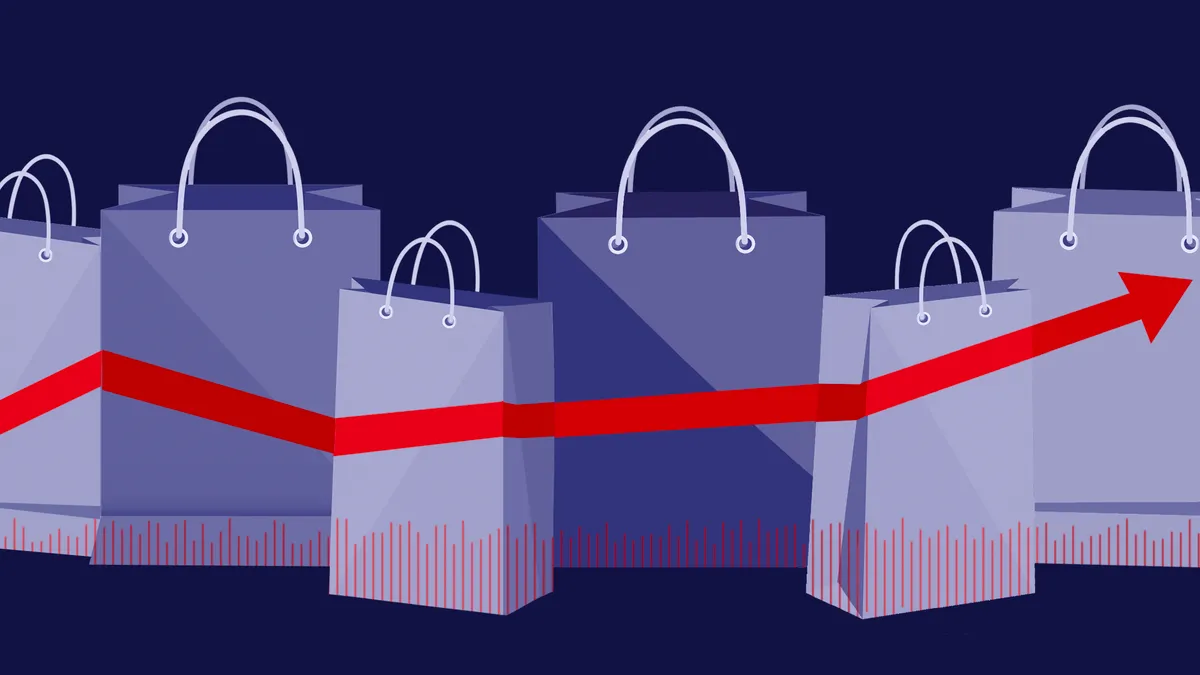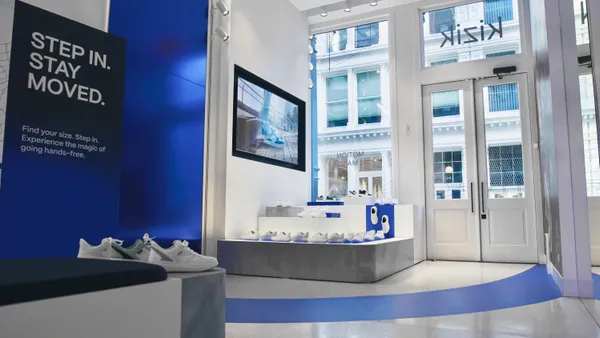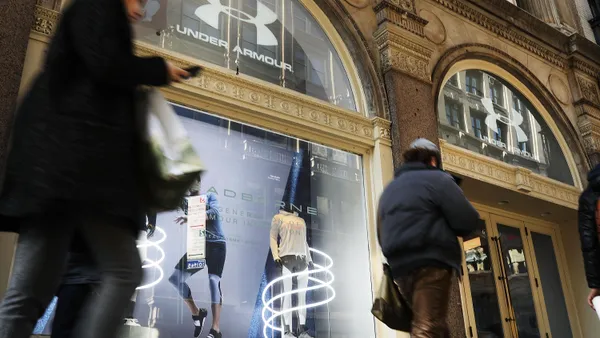Dive Brief:
-
Mary Meeker, partner at venture capital fund Kleiner, Perkins, Caufield & Byers, Wednesday presented her exhaustive study on internet trends at this year’s Code conference in Silicon Valley, with findings that have major implications for retailers.
-
Internet sales in the U.S. have steadily increased since 2000, when they made up less than 2% of all retail sales, to about 10% of retail sales in 2015. While progress, that’s still way behind China, where mobile users divide 71% of their time between internet portal Tencent, e-commerce giant Alibaba, and web services Baidu. Some 31% of Chinese WeChat users buy from retailers.
-
The report also found that major retailers are reaching $100 million in online sales in less time: Nike took 14 years after the launch of its e-commerce site, while Lululemon took nine, and Under Armour took eight, according to Meeker. Warby Parker, once an e-commerce pure-player, now makes more money per square foot in its retail stores than Tiffany’s, second only to Apple.
Dive Insight:
One startling fact in Meeker's report is the dominance tech companies have on the physical retail market. Newcomer Warby Parker, which started selling its eyewear purely online in 2010 and now has 31 locations, surpassed Tiffany's in sales per square foot of retail space this year. That's even more startling when comparing the price points of the companies' merchandise: while Tiffany jewelry sells for thousands of dollars, Warby Parker is famous for its low prices on glasses that don't sacrifice style. Both Warby Parker and Apple have also focused on creating an environment that encourages people to explore their products, without the pressure to buy.
Beyond the growth of e-commerce and physical stores started by pure-play online retailers, Meeker also gave some insight on how retail marketers could better spend their dollars.
Meeker believes that mobile ads will continue to grow—by tens of billions of dollars— in the near future as more people in the U.S. use their smartphones to buy things and services. Facebook and Google will likely dominate, with consumers spending more time on Facebook and Spotify than they do commuting.
But Meeker says that retailers and other marketers are missing the boat on mobile, sending an overabundance of their budgets to legacy outlets. She assessed the U.S. mobile ad market at $22 billion, with consumers spending 25% of their time on mobile devices compared to 36% watching television, 22% on the internet via computer, 13% listening to radio, and 4% percent reading print. Yet mobile marketing spending is just 12% of advertising outlays.
Facebook and Instagram are major players, according to Meeker’s assessment, as well as Snapchat, which says it has users that interact with sponsored lenses and brand filters for 20 seconds, translating to tens of millions of views or more, according to Wired magazine.
But she also notes that, as the use of data grows, so do concerns about privacy and control on the part of users. We’re already seeing consumers annoyed and even disturbed by ads and taking steps to mute or block them. Some 45% of consumers are more worried about online privacy than they were one year ago, and 74% have limited their online activity in the last year due to privacy concerns, she found.
That annoyance and concern about data privacy is denting the effectiveness of online ads. While U.S. internet advertising grew about 20% last year, reaching $60 billion, 81% of people surveyed mute video ads, 62% are annoyed by pre-roll ads, and 92% have considered using ad-blocking software.












